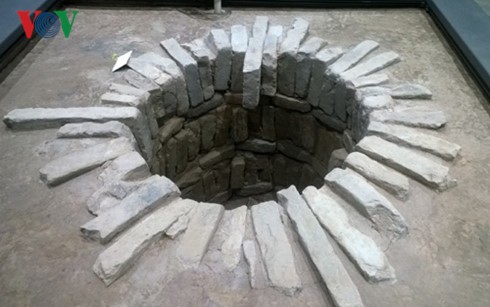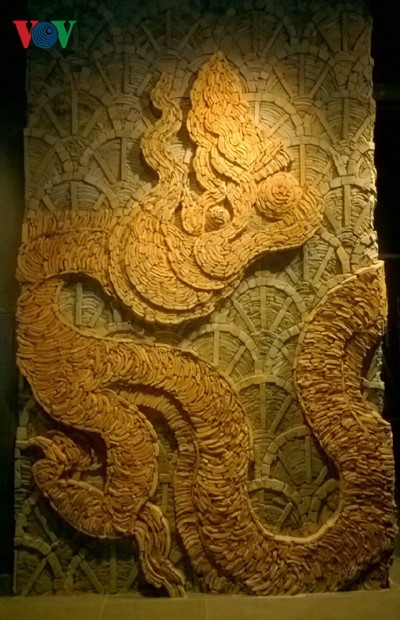(VOVworld)- An exhibition space inside the National Assembly building has been open to the public since May 2016. It is considered the first archeological museum in Vietnam and displays precious artifacts from the Thang Long royal citadel.
 |
| An ancient well on display |
The exhibition showcases 140 vestiges and tens of thousands of items excavated from the construction site of the National Assembly building between 2008 and 2009. Located on the 2 underground floors of the new building, the exhibition area is established to create a symbolic image of the Thang Long royal citadel, a world heritage site. The display is arranged in chronological order with vestiges and artifacts intermingled. Prof. Dr. Bui Minh Tri, Director of the Center for Royal Citadel Studies at the Academy of Social Sciences, the organizer of the exhibition, said: “We want to recreate the royal citadel in a lively way so that the public will be deeply impressed by the valuable archaeological findings, the size of architectural structures, and the construction techniques and materials”.
 |
| Part of the exhibition |
The 2nd underground floor displays items belonging to the pre-Thang Long period before 1010 when King Ly Cong Uan moved Vietnam’s capital city to Thang Long, now Hanoi. Artifacts of the post-Thang Long period can be seen on the 1st underground floor. Prof. Dr. Bui MinhTri explained: “These are the first images of the Ly dynasty’s royal architecture. We can be fully proud that the Ly kings created a unique architecture with advanced construction methods. This is vividly reflected in the decorative materials of the roofs and foundations of the structure”.
The 2 large-size wall pictures by Bui Thu Trang were made of excavated brick and tile pieces, featuring the construction process of the citadel and the flourishing Dai Viet kingdom. The pictures “Flying dragon” and “Thang Long sunrise” are inspired by the dragon, an emblem of the Ly dynasty, and the lotus patterns of the tiled roofs of the royal palaces.
The exhibition “Archaeological findings underneath National Assembly building” is the result of a 4-year project conducted by researchers of the Center for Royal Citadel Studies at the Academy of Social Sciences.